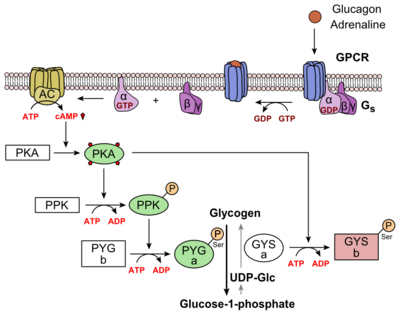Human Glucagon Class B G Protein-Coupled Receptors (GPCRs)
Introduction
Human glucagon class B G protein-coupled receptors (GPCRs), also known as secretin-like receptors, are a subfamily of GPCRs and very similar in structure to the more well known class A (rhodopsin-like) glucagon receptor family. [1] Located in the liver, class B glucagon receptors (GCGRs) are activated by the binding of the hormonal peptide glucagon. Glucagon binding leads to the release of glucose into the bloodstream and plays an essential role in glucose homeostasis. Class B GCGRs are composed of a seven transmembrane domain (7TM) and an extracellular domain (ECD) that are required for glucagon binding.
Structures of Class A vs. Class B GPCRs
Class A vs. class B glucagon receptors share less than fifteen percent sequence homology, but both share a 7TM domain. [1] Understanding for class A family of GCGRs of the structure-function mechanism has made great progress over the past few years, but understanding of class B has fallen behind but is now catching up. [2] Comparison of the helices to that of the helices showed that the general orientation and positioning of the alpha helices are conserved through both classes. Detailed structural alignments of the two GPCR subclasses revealed multiple sequence misalignments in the transmembrane region signifying a variety of structural deviations in the transmembrane helices. [2] The N-terminal end of in class B GCGR, located in the 7TM, is longer than any known class A GPCR structure and stretches three supplementary helical turns above the extracellular (EC) membrane boundary. This region is referred to as the . The stalk is involved in glucagon binding and helps in defining the orientation of the ECD with respect to the 7TM domain. [2] Also specific to class B GPCRs, a Gly residue at position 393 induces a ; this bend is stabilized by the hydrophobic interaction between the . One of the most distinguishable characteristics of the class B 7TM is the of 25 degrees and its length compared to that of , which is much shorter. This helical tilt results from Glu 406 in helix VIII that is fully conserved in secretin-like receptors and forms two interhelical salt bridges with conserved residues Arg 173 and Arg 346. [2] Despite these differences, a vital region that is conserved in both class B and class A receptors is the disulfide bond between in extracellular loop two (ECL2). This bond stabilizes the receptors entire 7TM fold. Lastly, the locations of the extracellular tips for class B glucagon receptors allow for a much wider and deeper ligand-binding pocket than any of the class A GPCRs. [2] These wide extracellular tip locations specifically occur between two sets of alpha helices, (Figure 1).
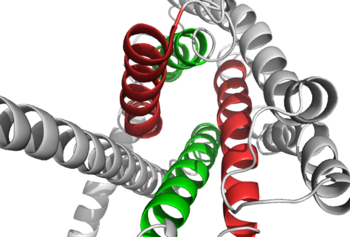
Figure 1: Extracellular tips of the 7TM helices. Helices two and six are shown in green, while helices three and seven are shown in red
How These Structures Lead to Function
Structurally, the 7TM and its signature seven helical structure is involved in signaling via coupling to heterotrimeric G proteins that activate adenylate cyclase to increase the levels of intracellular cyclic AMP. Additionally, this coupling increases levels of IP3 and intracellular calcium levels. [2] The wider and deeper ligand-binding pocket of class B GPCRs allows for a vast array of molecules to be bound that in turn allow for numerous functions activated by peptide receptors. [3] The conformation and orientation of the 7TM and the ECD regions dictate the functionality of the class B G protein-coupled receptor, which has an open and closed conformation of the GCGR. When glucagon binds to GCGR, the open conformation of GCGR is stabilized. The open conformation is when glucagon can bind to GCGR; in the closed conformation binding does not occur.[3]
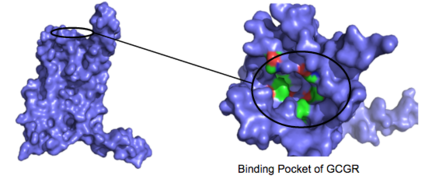
Figure 4: Binding Pocket Residues: Residues with side chains of carbon(utilizing the
hydrophobic effect) are shown in green and side chains containing oxygen (
hydrophilic) are shown in red. The properties of hydrophobicity and hydrophilicity of the residues create the
binding affinity of glucagon.
[3] Many of the residues in the binding pocket that are in direct contact with the glucagon molecule are charged or are polar. The binding site location of the hormone peptide ligand has been identified, and the N-terminus of glucagon is known to bind partly with the ECD while the rest of glucagon binds deep into the . The amino acids at the N-terminus of the class B 7TM have the ability to form hydrogen bonds and ionic interactions, which can be seen in the amino acid sequence of glucagon (Figure 2). [4]
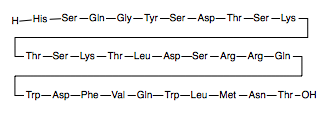
Figure 2: Amino Acid Sequence of Glucagon
There are specific amino acid interactions that maximize affinity. This includes the alpha helical structure of the . The alpha helical structure of the stalk interacts directly with glucagon; when the alpha helix of the stalk is disrupted, the affinity of glucagon for GCGR decreases. Furthermore, there are certain interactions that hold the helices of the 7TM in the conformation that maximizes affinity. [3] The high affinity conformation of GCGR is the open conformation when glucagon can bind. Without these specific interactions between the residues, open conformation is not stabilized and GCGR remains in the closed conformation where glucagon cannot bind. [2] The disulfide bond between serves to hold the helices in the proper orientation for binding and stabilize the open conformation. Additionally, the salt bridges between Glu 406, Arg 173, and Arg 346 hold the open conformation together for higher affinity (Figure 4). [3]
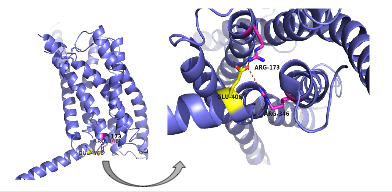
Figure 4: Salt Bridge. The non-covalent interactions between residues Glu 406, Arg 173, and Arg 346 form a
tridentate salt bridge. The Glu 406 acts as the central residue in the tridentate salt bridge; Arg 173 and Arg 436 both interact with Glu 406. The salt bridge is located on the intracellular side of the transmembrane helices.
Glucagon Signaling Pathway
For glucagon to initiate the breakdown of glycogen into glucose, it follows a specific signaling mechanism (Figure 5). Glucagon binds to a G protein-coupled receptor located on the plasma membrane, and this binding induces a conformational change that activates G proteins which exchanges a guanosine diphosphate (GDP) for guanosine triphosphate (GTP) that is bound to the alpha subunit. Now with the GTP in place, the activated alpha subunit leaves the heterotrimeric G protein and activatesthe next enzyme in the cascade, adenylate cyclase. Once adenylate cyclase is activated, it catalyzes the conversion of adenosine triphosphate (ATP) into cyclic adenosine monophosphate (cAMP). This in turn activates protein kinase A (PKA) that then activates phosphorylase kinase. Finally, the phosphorylase kinase phosphorylates glycogen phosphorylase b that is then turned into its activated form, glycogen phosphorylase a. This phosphorylase A enzyme is responsible for catalyzing the release of glucose-1-phosphate into the bloodstream from glycogen polymers (Figure 5).
Clinical Relevancy
Of the fifteen human class B GPCRs, eight have been identified as potential drug target. [5] Therapeutic agents have been created from the peptides themselves within this protein, but overall pharmaceutical companies have had difficulty creating agents that act on family B GPCRS. [5] There is an outward appearance and inherent flexibility in the class B GCGR 7TM because of conserved hydrogen bonds that flank a glycine residue, and this structure along with the ECD and its role of interactions on the extracellular side of receptors may provide evidence to how class B receptors adjust its conformational spectra for various receptors. Researchers hope to show how these conformations can be utilized in potential treatments of a wide array disorders. [5]
Potential Inhibitors
Research for class B GCGR inhibitors is primarily looking into allosteric inhibitors having the ability to target specific receptors in order to treat problems like stress disorders, managing hyperglycemia, and also alternative mechanisms for treating migraines. [6] Known inhibitors include monoclonal antibodies which inhibit glucagon receptors through an allosteric mechanism. The monoclonal antibodies bind to two different sites, the ECD opposite of the binding region and then the helical portion of the ECD as well. [7]
Research
Determining the structure of class B GCGRs is a reason for its lack of advanced knowledge in the field, but X-ray crystallography and NMR have been the main processes performed and have had some success with it over the past couple years. [8] X-ray crystallography displayed the crystal structure of ECDs of class B GPCRs in complex with their ligands along with the crystal structure of the 7TM. In addition to this, NMR has allowed the ability to directly understand structures of soluble amino-terminal domains of numerous members of the secretin-like family that bind peptide hormones. Primary sequences analysis have led to the finding of seven segments of eighteen or more relatively hydrophobic residues that are believed to represent transmembrane helices that take part in creating an intramembranous helical bundle. [8] Also, mutagenesis has been used to determine which residues were necessary in maximizing affinity for glucagon. Finally, the orientation and mechanism of the peptide interactions within these structures are studied using peptide structure-activity relationships (SAR), receptor and ligand fragments, chimeric receptors, site-directed mutagenesis, photochemical cross-linking, and molecular modeling. [8]




